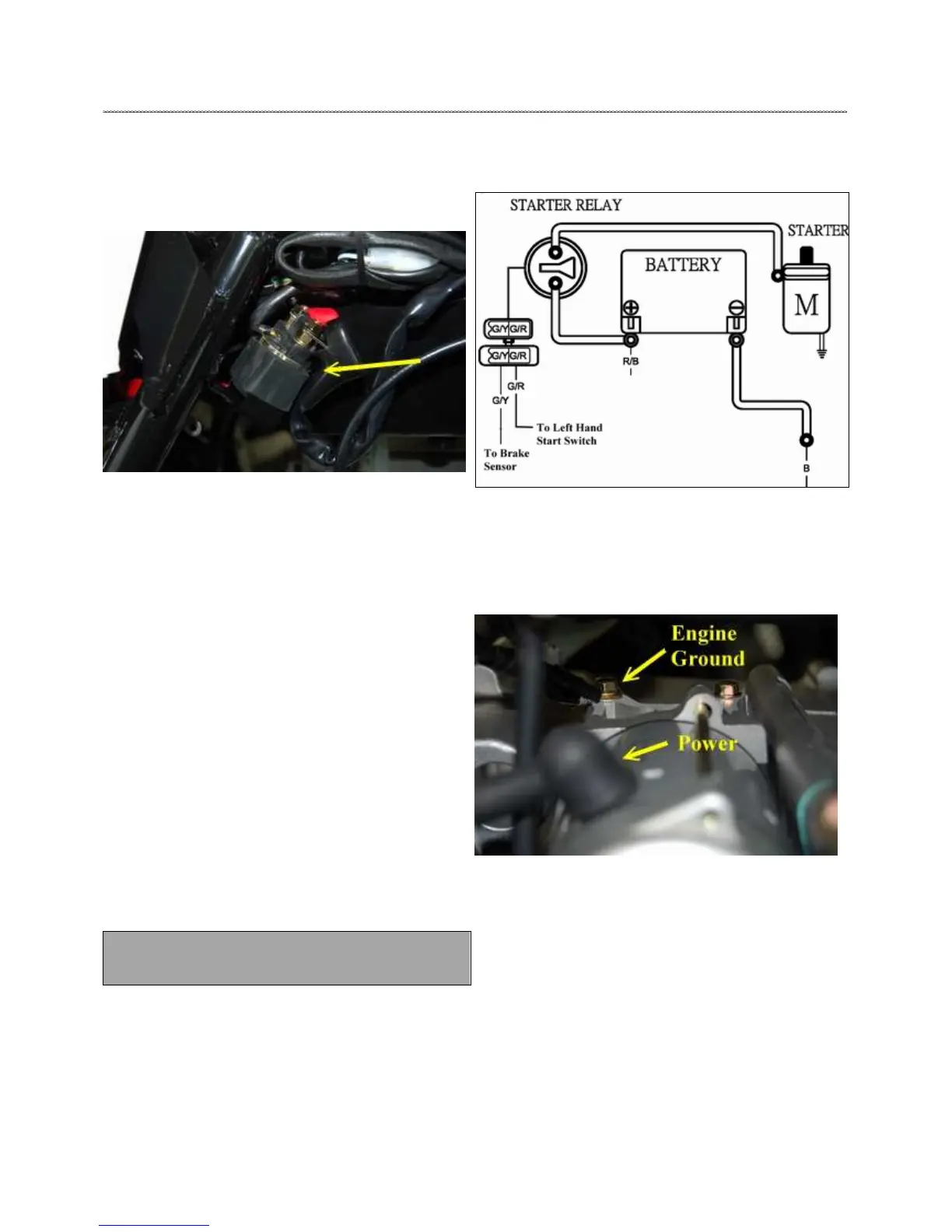ELECTRICAL
9-26
STARTER SYSTEM
STARTER RELAY
Take off the right side panel. The starter relay locates under
right hand rear cab.
The starter relay consists of a simple 2-way circuit. Power is
present at the (R/B) wire from the battery. Once the switching
side of the relay receives power from the brake switch (G/Y)
and a ground path from the starter button (G/R), battery power
is sent to the starter motor to crank the engine.
VOLTAGE DROP TEST
The Voltage Drop Test is used to test for bad connections.
When performing the test, you are testing the amount of
voltage drop through the connection. A poor or corroded
connection will appear as a
high voltage reading. Voltage drop
shown on the meter when testing connections should not
exceed 0.1 VDC per connection or component.
To perform the test, place the meter on DC volts and place the
meter leads across the connection to be tested. Refer to the
chart on next page to perform voltage drop tests on the starter
system.
Voltage Drop should not exceed: 0.1 DC volts per
connection
Use the illustration below when troubleshooting a “No Start”
condition.
STARTER MOTOR SERVICE
The starter motor is a complete service part. If it is determined
that the starter motor is the failed part, replace as needed. See
the parts manual for correct part numbers.
STARTER MOTOR DISASSEMBLY
NOTE: Use only electrical contact cleaner to clean
starter motor parts. Other solvents may leave a
residue or damage internal parts and insulation.
NOTE: Some starter motors may not be serviceable.
Replacement of entire assembly may be required.
Check the parts manual for replacement part
information.

